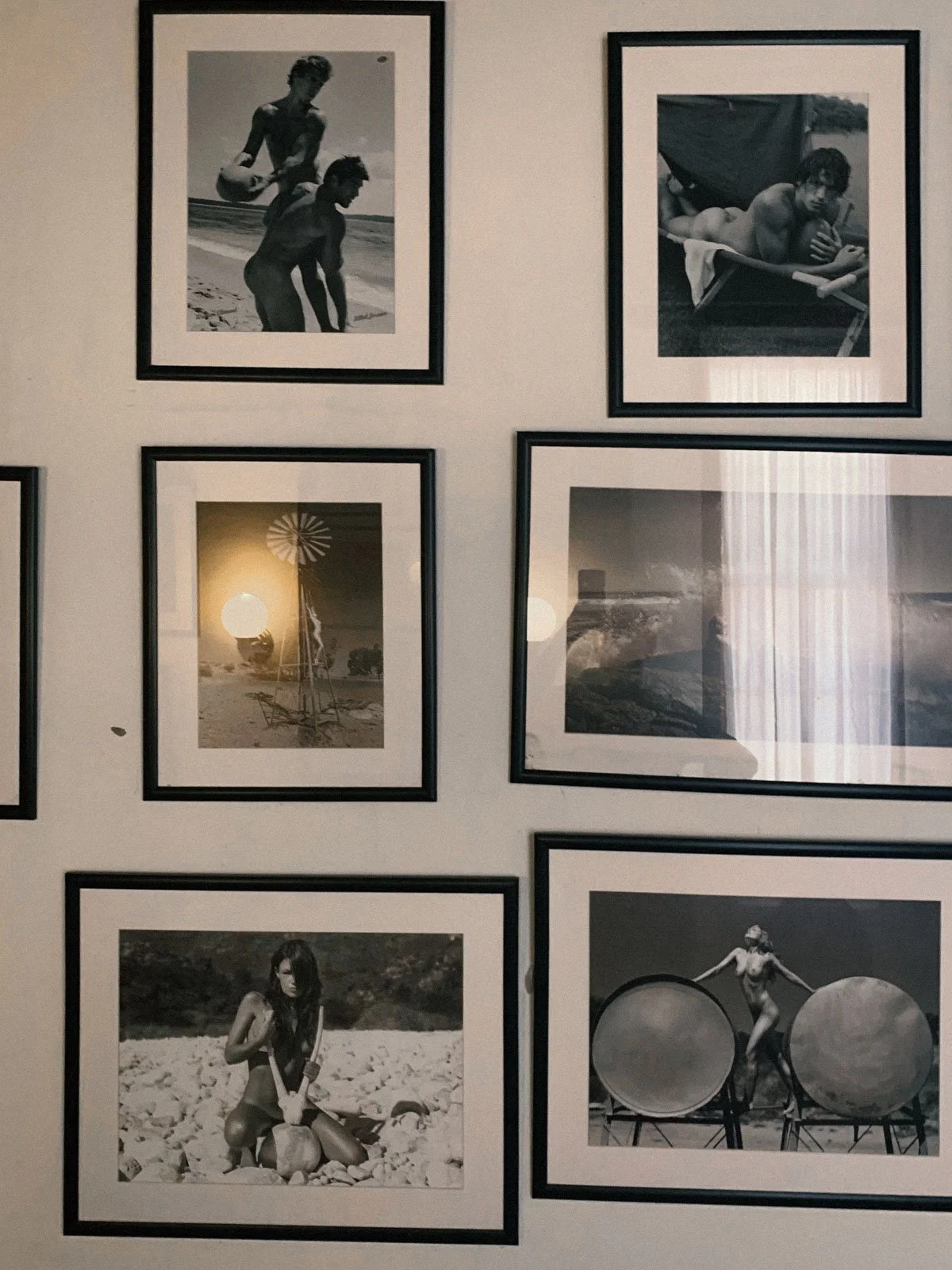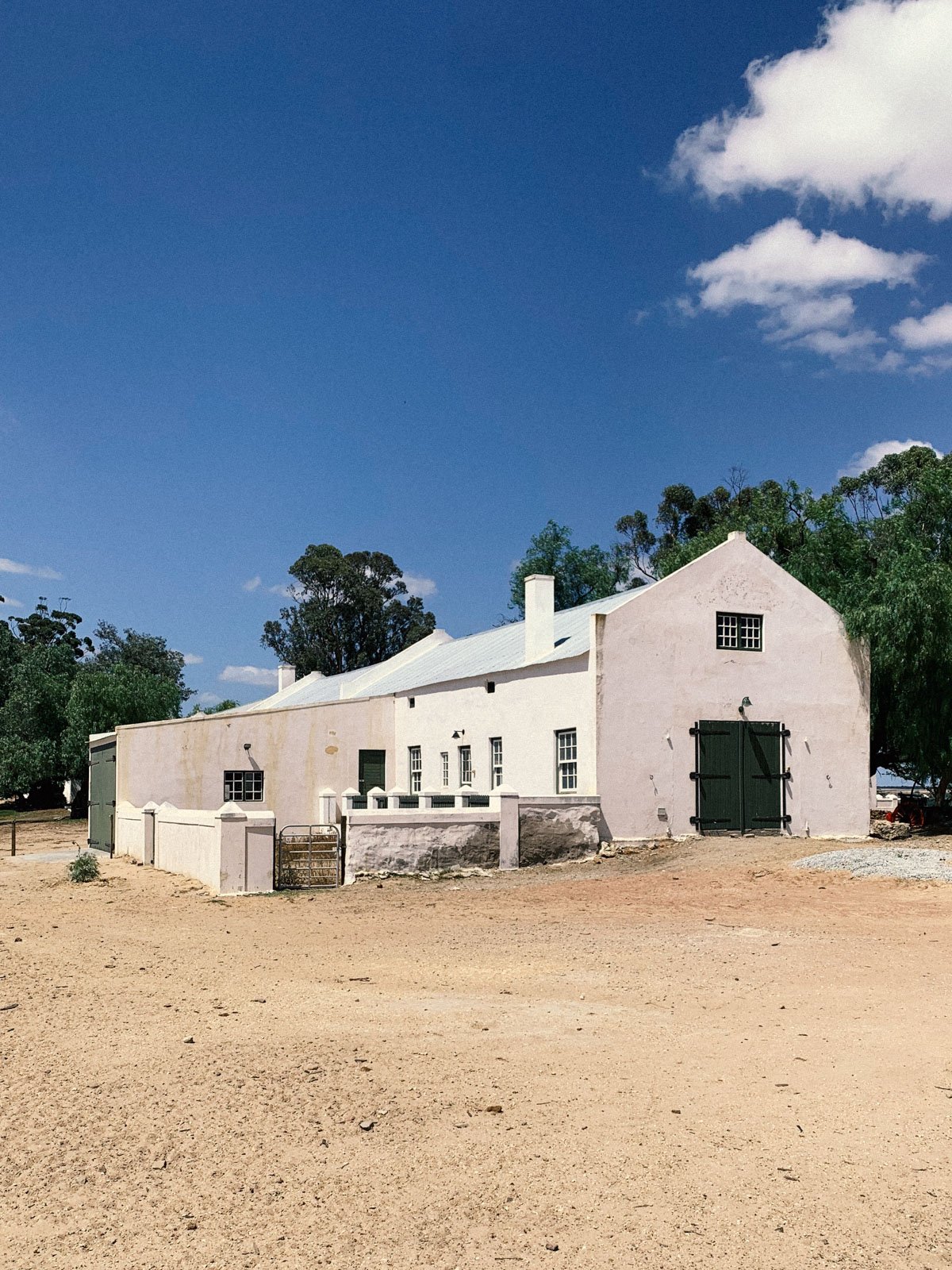Kersefontein Farm Stay – Cape Dutch gables, big-sky sunsets
The Why – Heritage Without the Gloss
Kersefontein is not a spa hotel and doesn’t try to be. There is no pillow-menu, but the real feathers come from the farm geese. Wi-Fi hides in one room, yet the night sky streams a billion pixels in 4K. What you get is heritage you can touch, space that never feels crowded and a host who would rather talk soil moisture than social media.
Come if you like old buildings that still earn their keep, sunsets that make you forget the time and breakfasts cooked by people who grew the wheat for your toast. Leave with dust on your boots, fresh stories in your notebook and a reminder that quiet is still possible.
Where to book?
Kersefontein lies about 150 km north-west of Cape Town on the banks of the Berg River. Founded in 1770 by Martin Melck, the farm is still in family hands; today host and farmer Julian Melck keeps the lights on, the sheep shorn and the guest kettles boiling. Visitors come for clear air, open space and rooms inside lime-washed buildings that have survived more than two centuries.
Arrival: Roads, Runway & First Footsteps
Road route – Follow the R27 up the West Coast, turn inland at Hopefield and stay on the R311 for 20 km. The last 3 km are graded gravel; any rental car will cope.
By air – Light aircraft can land on the 700 m grass strip next to the homestead. Radio ahead; Julian meets pilots with a bakkie-ride to the yard.
Check-in – There is no formal desk. Ring the ship’s bell on the stoep; a team member will guide you to the library for coffee, a slice of roosterkoek and a quick run-through of farm basics: mobile signal is patchy, Wi-Fi sits in the manor, dinner is at 19:30 unless the sheep disagree.
Setting: Riverbend Wheat, Wetland & Atlantic Air
The farm covers roughly 10 000 ha of wheat, grazing veld and protected wetland. The Berg River bends around the house; in winter it floods the marsh, attracting spoonbills and flamingos. The Atlantic coast is a 20-minute drive west, while Hopefield’s fynbos plain erupts in wildflowers from late August to September.
Expect temperatures of 8 – 18 °C in mid-winter and 20 – 35 °C in high summer. A south-easterly breeze often cools late afternoons; pack layers for night-time stargazing.
Hospitality: Hands-on, Home-style, Never Hurried
Julian lives on site and treats guests as temporary neighbours. He eats most dinners at the long farmhouse table, swapping updates on wheat prices and local gossip with equal ease. Staff numbers are small—some have served here for more than ten years—so you will recognise the faces carrying breakfast, leading rides and turning down beds.
Need a spare phone charger, picnic blanket or vet wrap for a riding stirrup? Ask once and it appears. Children from eight upward are welcome; older teens often join farm rounds at sunrise. Groups can book the full property for reunions or small weddings, and the team will haul tables outside, string up festoon lights and leave the night sky to finish the décor.
Interiors: Cape Dutch Bones, Quiet Comfort
Room mix – Seven units: three in the manor, one loft above the stables, one freestanding smithy cottage and two garden doubles. Sizes run 25–45 m². All have en-suite shower or bath, mosquito nets and electric blankets for winter. There are no televisions.
Look and feel – Yellow-wood floors, reed ceilings and Cape furniture recovered from the attic during a 2000-era restoration by interior historian Graham Viney. Modern parts—pressure-balanced showers, under-floor heating—are added quietly behind lime-washed walls. Linen is high-thread cotton; bathroom amenities are local fynbos-based soaps.
Public rooms follow the same balance: antique maps and saddles on the walls, strong Wi-Fi only in the library, and couches deep enough to lose a novel.
History Beneath: 250 Years & Counting
1770 – Prussian-born merchant Martin Melck buys the land from the Dutch East India Company.
1840s – Kersefontein becomes known for horse breeding; livestock records list exports as far as India.
1940s – World War II sees parts of the manor used as coastal-watch posts.
1970s – Tourists begin to stay; Julian’s parents convert two spare rooms to fund maintenance.
2001 – 2003 – Viney and Julian restore outbuildings for guest use, rethatching roofs and reinforcing reed ceilings.
Today – Kersefontein remains a working cereal, sheep and cattle farm, as well as a film and photo location for period pieces.
Nearly every artefact on display—travel trunks, leather tack, merino shears—originated on the property. Only fragile items sit behind glass; everything else is free to pick up and inspect.
Atmosphere: Big Skies, Star-Sharp Nights
Life follows sun and season. Summer afternoons are for hammocks under pepper trees, river swims and cold beer in the Turn & Slip Pub—an old bakery now lined with propellers and cockpit gauges from Julian’s flying days.
In winter, wood fires burn in cast-iron stoves as rain drums on the thatch. Nights end with star photography or quietly competitive Scrabble in the library. You will hear tractors at dawn, guinea-fowl gossip in the yard and the occasional low pass of a training Cessna. Otherwise, silence stretches wide enough to notice your own footsteps.
Mornings – Eggs, Early Rides & Endless Coffee
Breakfast starts at 07:30. Expect farm eggs—fried, poached or scrambled—mosbolletjie toast, seasonal fruit and coffee from a small Darling roastery. Early risers often join Julian for a farm circuit: checking cattle fences, moving irrigation pipes or collecting eggs from the chicken coop. Bird-watchers walk the river track where malachite kingfishers hunt in shallows.
After breakfast guests split between river paddling, horseback rides or reading on the stoep. Lunch can be a farm platter in the dining room or a pre-packed picnic taken to the dunes.
Kersefontein Guest Farm opens its doors by old-fashioned conversation, not algorithms.
Reserve your slice of Berg-River heritage via:
Location: Berg River bend, Hopefield 7355, Western Cape, South Africa






























